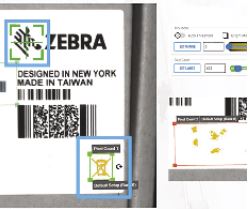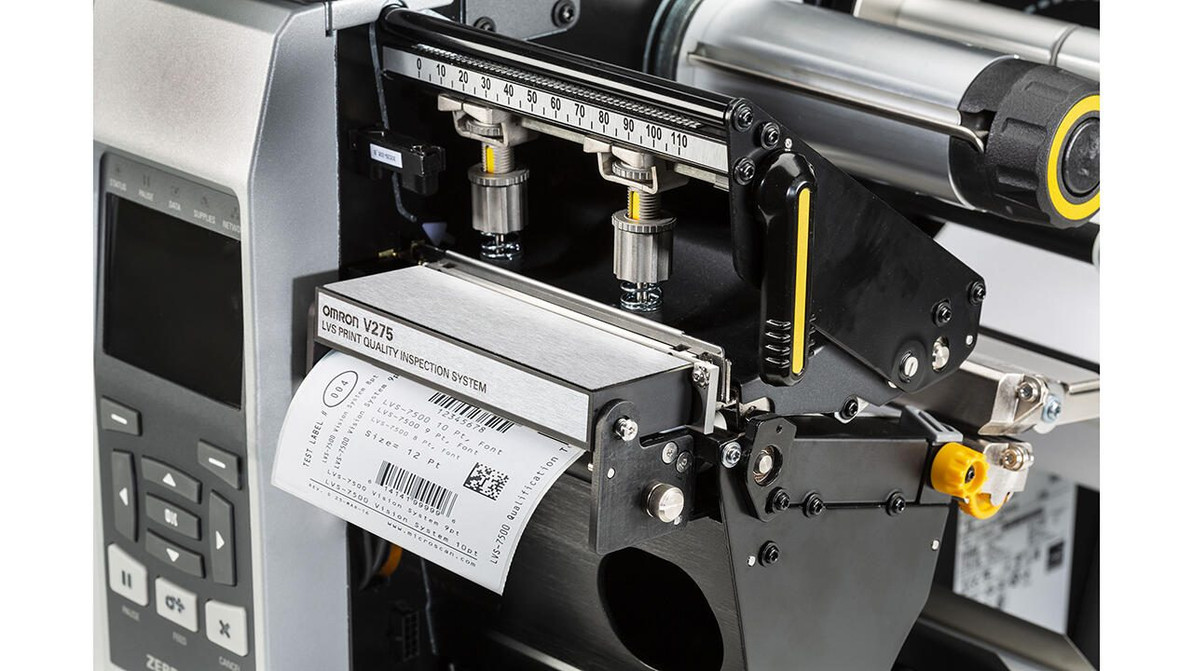Avoid the Ramifications of Damaged and Incorrect Labels
What motivates the demand for precise, premium labels? There's no good excuse to disregard the importance of label quality when there's so much on the line for businesses competing on a global basis like manufacturers and retailers. Packaging with incorrect labels could result in lost goods or (perhaps serious) consumer health problems. For instance:
- Allergies and recalls might result from undeclared components. (Did you know that one of the main causes of food recalls is incorrect labeling?)
- A missing mark may result in a fine.
- Costly returns and chargebacks may result from unscannable labels.
- Labels that are difficult to read can result in reprints, reporting mistakes, and even lost inventory, all of which waste time and money.
The accuracy and readability of product and package labels must be guaranteed for a variety of reasons, and these are just a few of them. Today, I'd like to highlight the four factors that, on average, cause businesses to rethink their labeling plans and eventually spend money on label verification technology solutions:
General product traceability
In general, product traceability is crucial for customer safety, legal compliance, and perceptions of overall quality. Traceability makes it possible for a customer, retailer, or other organization to find and separate defective units right away if there is an issue with a product. This is advantageous in the event of a recall and to guarantee adherence to legal requirements, such as those that increase transparency into the usage and whereabouts of medical equipment, raw materials, and other items.
In fact, businesses spent up to $24 billion USD on recalls in 2018 due to things like incorrectly printed labels, and just last year, a significant auto manufacturer was fined $20 million for not following the National Highway Traffic Safety Administration's (NHTSA) mandated recall procedures. The Automotive Industry Action Group (AIAG) has even established common transport label standards to make it simpler and more compliant for all supply chain participants to move goods and communicate data.
Life sciences industry regulations
Labels must be readable, display the right material, and include barcodes of a minimum standard in order to comply with regulatory requirements across the majority of life science-related companies, and in particular in the pharmaceutical and medical device industries.
Labeling violations may result in warning letters from regulatory agencies and recalls. In fact, one of the top three reasons for recalls in the pharmaceutical sector historically has been label-related problems. The Sedgwick Brand Protection Recall Index indicates that from 2019 to 2020, there was a 22% increase in medical device recalls.
Large shops are also attempting to make sure pharmaceutical products meet quality standards. For instance, Amazon has started requiring companies selling supplements on its American website to comply with Food and Drug Administration (FDA) labeling regulations. The product will be taken off the market if the seller cannot show that it is in conformity. And to reduce the possibility of fake goods entering the supply chain, the European Union (EU) has adopted tight traceability regulations for pharmaceutical medicine makers.
Customer-driven labeling specifications
To reduce the possibility of fake goods entering the supply chain, many manufacturers of higher value or higher risk commodities rely on proprietary, serialized label text. Label inspection and serialization allow for the control and verification of label authenticity.
An illustration of the necessity for anti-counterfeiting tactics is the recent report of fake N95 masks entering the supply chain. Additionally, GS1 labeling standards compliance has been a significant investment driver for verification infrastructure in relation to the serialization of consumer goods and healthcare products.
Safety and brand protection
The majority of merchants demand that their suppliers adhere to strict guidelines that outline the label content and printing quality. Retailers frequently return products and impose financial penalties on suppliers when they are unable to accept product owing to a subpar barcode or inaccurate information included within.
One manufacturer of brooms and mops, for instance, spent more than $100,000 as a result of using the wrong sort of barcode on the product packaging. In order to prevent similar mistakes in the future, the company adopted a printer-integrated label inspection system in response to this issue.
Key Points for Zebra Technologies Label Inspection System
- Inspect label accuracy with visual pass/fail feedback
- Verify label quality, accuracy, and legibility
- Reduce health and safety risks to consumers
- Increase productivity, customer satisfaction, and brand value
Challenge
Labels are critical for informing consumers about product contents, instructions, and hazards or warnings. Missing, incorrect, or unreadable labels can result in serious health or safety risks when a product contains hazardous materials or when consumers have allergies or sensitivities. Failure to provide correct and complete product labeling could result in costly product recalls, exposure to financial liability, and devaluation of a brand’s reputation.
Solution
Code-reading sensors, fixed scanners, smart cameras, and software from Zebra Technologies work together to perform label reading and verification inspection, ensuring compliance with packaging regulations set by governing bodies and associations, and that packaging meets customer specifications. These solutions play a significant role in protecting consumers’ health and safety while simultaneously protecting brand through packaging quality and accuracy.
Label Quality Verification

Clear and readable labels are essential for customers to understand important details about a product, such as ingredients, potential allergens, and preparation or cooking instructions. Zebra’s code reading sensors, smart cameras, and software provide label-quality verification capabilities and detect poor label quality such as unreadable text and smudged or smeared printing. This avoids confusion on the part of the consumer or incorrect identification of important details, reducing health and safety risks and the likelihood of lost sales. In addition to protecting packaging quality and integrity, label quality verification also streamlines supply chain and shipping logistics by mitigating lost or incorrectly routed products or shipments.
OCR/OCV Inspection

In addition to verifying that labels on packaging are readable, Zebra smart cameras and software verify that labels are legible and accurate. Using optical character recognition (OCR) and optical character verification (OCV) technology, printed text on labels and packaging is scanned and analyzed, verifying that the text is complete, readable, and accurate. In combination with label-quality inspection, this further minimizes risks to consumers by ensuring that expiration dates, refrigeration or heating instructions, and details of hazardous contents are clear to consumers. Accurate OCR/ OCV capabilities help guarantee that packaging is accurate, improving customer satisfaction and enhancing brand reputation and value for the manufacturer.
Allergen Label Inspection

Allergens pose a significant risk to public health and can result in costly and brand-damaging product recalls. In many industries, accurate labeling of common allergens is mandated by regulatory bodies and government agencies. Zebra’s code-reading sensors, fixed scanners, smart cameras, and software maximize product safety through label accuracy inspection and rapidly identify the location of noncompliant products within the supply chain. This enables manufacturers to minimize and contain the risk to consumers by quickly isolating mislabeled products in the event of a process escape.
Mislabeled Product Prevention

Most product packaging contains multiple labels or graphics necessary for informing consumers and for aiding in the proper routing and handling of products through supply and logistics operations. It is essential that the correct labels be placed on packaging. Incorrect labels introduce confusion, increase product waste, and can lead to costly recalls, shipment rejection, and liability. In addition to text, 1D and 2D barcodes or alphanumeric codes are often used to help avoid mislabeling. Zebra offers a full range of code-reading sensors, smart cameras, and software capable of verifying the accuracy of labels placed on lids, containers, and packaging.
The Power Of Printer-Integrated Label Inspection
In order to avoid labeling mistakes and make sure that only high-quality barcodes are printed on final packaging, printer-integrated label checking devices are a very effective solution. These technologies are able to analyze 100% of all labels printed while maintaining normal production rates. The system can be configured to halt all printing instantly when an error is found. (One such system is the Omron V275 barcode verification and print quality inspection system, which is integrated into the Zebra ZT600 series thermal printers.)
Automated label checking reduces the possibility of heavy fines or consumer and retailer displeasure, which over time can significantly boost a company's competitive edge. Contact us today to discuss which Zebra Technologies products will enhance your label accuracy verification process.
Recent Posts
-
Breakthrough Technology for Machine Vision Applications
Zebra Aurora™ Deep Learning offers breakthrough technology for machine vision applications. Design …May 16th 2024 -
Exploring the Power of Collaborative Robots in Heavy Payload Production
Are you still convinced that traditional robots are the best solution for handling heavy payload pro …May 9th 2024 -
Best Methods for Connecting Older Devices and Machines for Data Analysis
In today's rapidly advancing technological landscape, data analysis has become a cornerstone for inf …May 6th 2024




